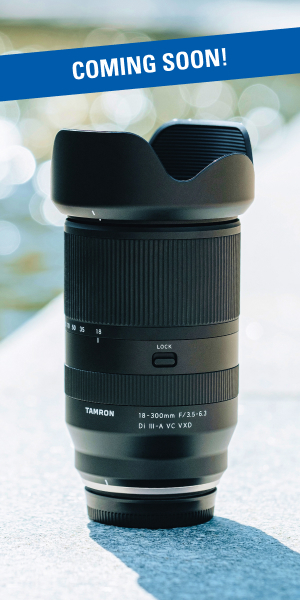All pet owners want to learn how to photograph dogs and cats. Our pets are beloved members of the family, and capturing their unique personalities through photography creates lasting memories. Photographing pets can be a challenging experience—animals are unpredictable, move quickly, and don’t always respond to posing like people do. However, once you have digested the tips in this pet photography guide and practiced a little, you’ll be well on your way to capturing stunning portraits of your furry family members.
Whether you’re using a smartphone, a mirrorless camera, or a DSLR with a versatile lens, this guide will walk you through everything you need to know to get started and improve your pet photography skills.
What You Will Learn in This How to Photograph Dogs and Cats Guide:
- Essential tips for photographing both dogs and cats in natural and indoor settings
- How to work with lighting to bring out the best features of your pet
- Techniques to capture action shots and candid moments that showcase personality
- Recommended gear and lenses for getting sharp, beautiful pet portraits
- How to make photo sessions fun and stress-free for both you and your pet
TIP 1: Avoid Harsh Sunlight and Flash: Opt for Natural Light Instead
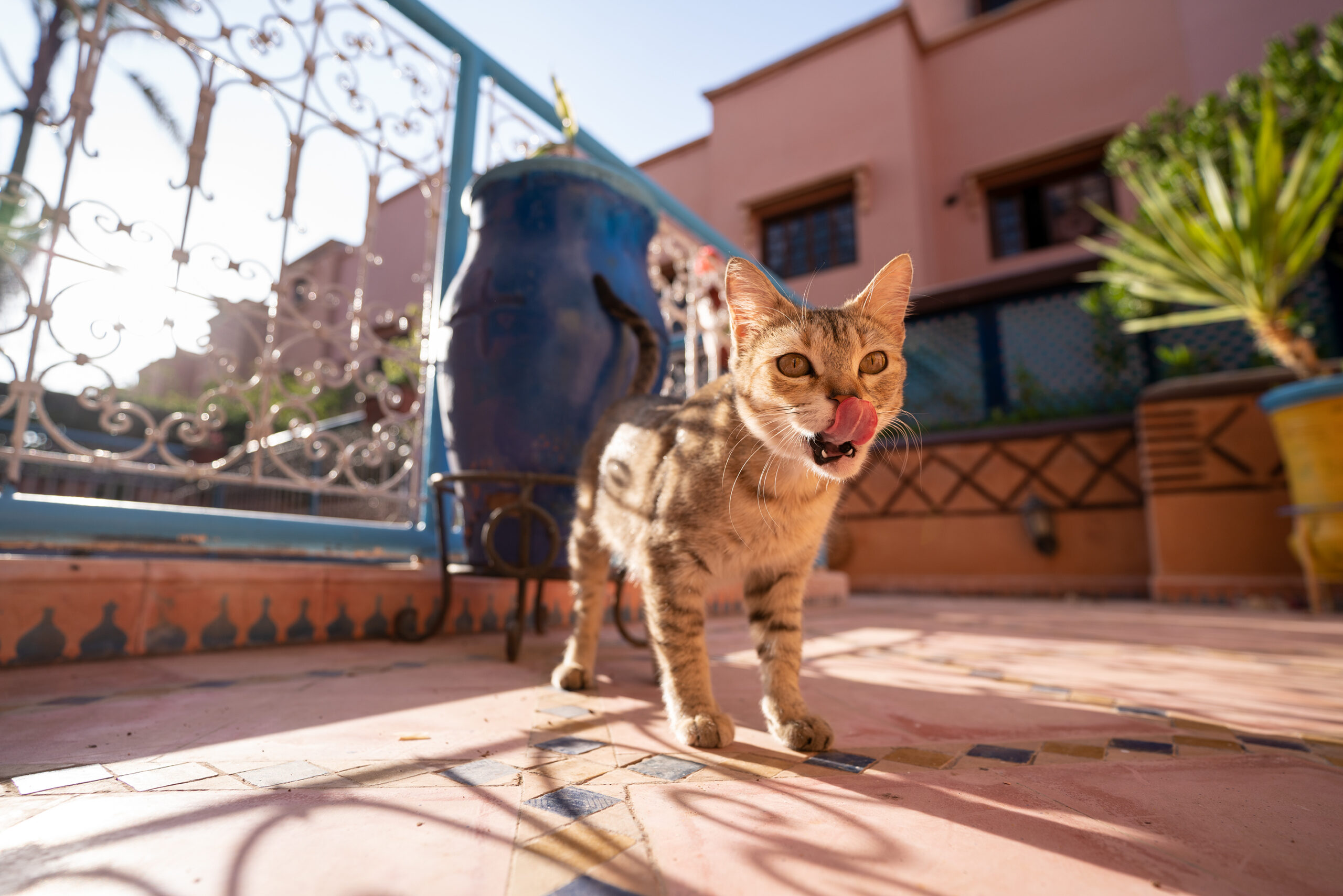
When learning how to photograph dogs and cats, understanding lighting is critical to capturing natural, flattering portraits. Using a flash, especially one that is not bounced or diffused, can cause harsh shadows and create an unnatural look. Similarly, direct sunlight can lead to unflattering results, producing strong shadows and causing pets to squint, which can ruin an otherwise perfect shot.
Instead, aim to photograph your cat or dog in soft, natural light. Position them near a large window indoors where the light is bright but diffused, or take them outdoors during times of indirect sunlight, such as early morning or late afternoon. Cloudy days are also excellent for pet photography because the clouds act as a natural diffuser, softening the light beautifully.
How to Photograph Cats and Dogs Quick Tip:
For the best pet portraits, avoid harsh light and instead seek out soft, even lighting. Natural, indirect light will help highlight your pet’s features without harsh shadows or squinting—giving your photos a clean, professional look.
TIP 2: Zoom In and Out and Move Around

When exploring how to photograph dogs and cats, using a zoom lens gives you tremendous creative flexibility. A zoom lens allows you to capture a variety of perspectives without needing to physically move too close, which is especially helpful when photographing shy or easily startled pets. By adjusting your distance, you can maintain your pet’s comfort while still getting detailed, intimate shots.
Additionally, moving around and changing your shooting position leads to more dynamic and engaging images. Try shooting from directly overhead for a playful, graphic composition, or lay down on the floor to get on your pet’s eye level and create more personal, emotional portraits. Zooming in enables you to capture charming close-ups of details like paws, whiskers, and expressive eyes, while shooting at a wide-angle allows you to tell a fuller story by including your pet’s surroundings.
How to Photograph Cats and Dogs Quick Tip:
Vary your angles and use your zoom creatively to add personality and context to your pet photos. The more perspectives you explore, the more memorable and unique your images will become.
TIP 3: Freeze Action with a Fast Shutter Speed

When practicing how to photograph dogs and cats, capturing them while they are playing and active can be one of the most rewarding — yet challenging — aspects of pet photography. Fast-moving pets can easily cause blurry photos if your camera settings aren’t properly adjusted, so using a fast shutter speed is essential to freeze the motion and keep your images sharp.
One simple approach is to set your camera to the automatic Sports Mode, which automatically selects the fastest shutter speed possible for the available lighting. Alternatively, you can have even greater control by setting your camera to Aperture Priority mode (A or Av). Choose the widest aperture available, such as f/2.8, which lets in more light and prompts the camera to select a faster shutter speed to match.
If you notice your images still aren’t as sharp as you’d like, increase your ISO setting. A higher ISO allows your camera to use an even faster shutter speed, making it easier to freeze the action without introducing noticeable motion blur.
How to Photograph Cats and Dogs Quick Tip:
When photographing active pets, prioritize speed over perfection. Use the widest aperture, increase your ISO if needed, and keep your shutter speed high to capture sharp, lively moments that truly showcase your pet’s personality.
TIP 4: Make Pets Stand Out Against a Simple Background
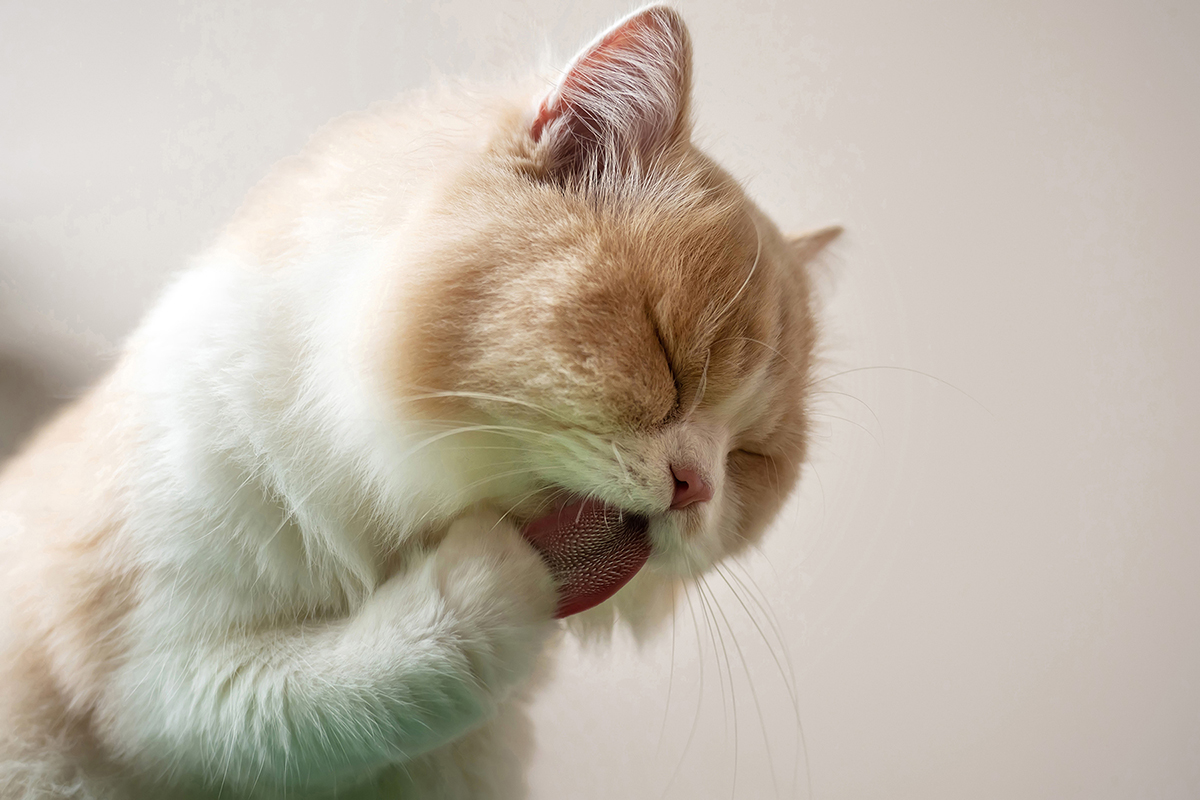
When learning how to photograph dogs and cats, one of the easiest ways to create stronger, more professional-looking images is by simplifying the background. Keeping the focus on your pet means eliminating distractions that can draw attention away from them. A busy or cluttered background can confuse the viewer’s eye and lessen the impact of your photo.
To help your pet stand out, position them in front of a simple, clean background whenever possible. Solid-colored walls, open grassy areas, neutral floors, or a softly blurred background created with a wide aperture all work beautifully. Pay attention to anything behind your pet that could visually interfere, such as poles, bright objects, or messy areas, and adjust your angle or location if needed.
How to Photograph Cats and Dogs Quick Tip:
A clean, uncluttered background naturally draws the viewer’s eye to your pet, making your portraits look more polished and professional with very little extra effort.
TIP 5: Put Yourself on Their Level
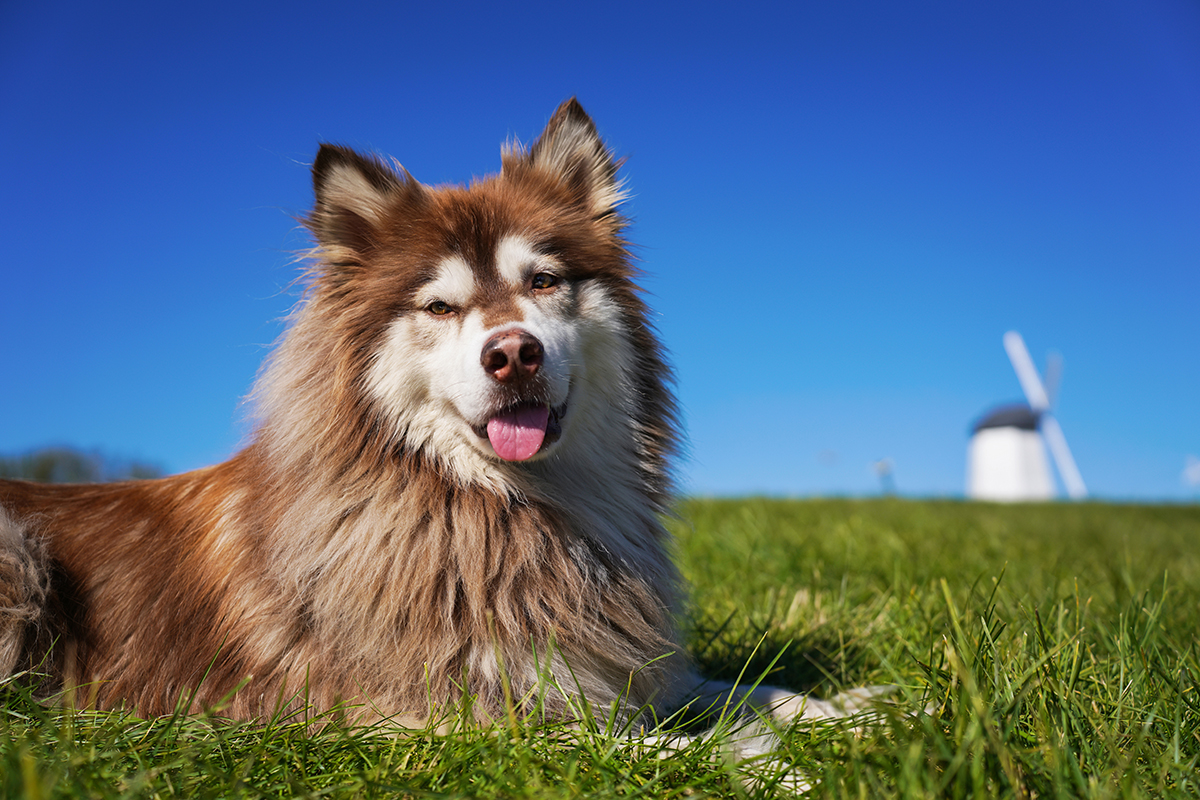
A key technique when mastering how to photograph dogs and cats is to capture the world from their perspective. Shooting from your pet’s eye level creates more engaging, intimate portraits that feel connected and natural. Instead of photographing from above, crouch down or even lay on the floor so you can meet your pet at their level. This simple adjustment makes a dramatic difference, helping you create portraits that truly capture your pet’s personality and spirit.
If getting low to the ground isn’t comfortable or practical, take advantage of your camera’s articulating or rotating LCD screen. By tilting or flipping the screen, you can easily position your camera lower while staying seated or standing, maintaining flexibility without losing the perfect shooting angle. Cameras with fully articulating screens are especially helpful when working with pets on the move, as you can quickly adjust your composition without changing your body position.
How to Photograph Cats and Dogs Quick Tip:
Shooting at your pet’s eye level instantly makes your photos feel more personal and authentic. It invites viewers into your pet’s world—and results in more emotionally compelling images.
TIP 6: Focus on the Eyes

When learning how to photograph dogs and cats, one of the most important techniques for creating compelling portraits is focusing on the eyes. Just like in human portrait photography, the eyes are the most expressive part of your pet’s face and can instantly convey a range of emotions—from curiosity to joy to affection. Sharp, focused eyes draw the viewer into the photograph, making the connection between the subject and the audience much stronger.
Always focus on the eye that is closest to the camera, especially if your pet’s face is turned slightly. This ensures that the focal plane is correctly aligned for maximum impact. If your camera offers pet eye autofocus (pet eye AF), use it to lock onto your pet’s eye quickly and accurately. However, if your camera does not have this feature, switch to spot autofocus (spot AF) mode to manually select the eye and ensure precise focusing. Spot AF gives you control over exactly where your camera locks focus, which is crucial when working with lively or unpredictable subjects like pets.
How to Photograph Cats and Dogs Quick Tip:
Sharp eyes are the soul of a great pet portrait. Whether you use pet eye AF or spot AF, make sure the nearest eye is perfectly in focus to instantly elevate the emotional impact of your photos.
TIP 7: Get Your Pet’s Attention with Treats or Toys
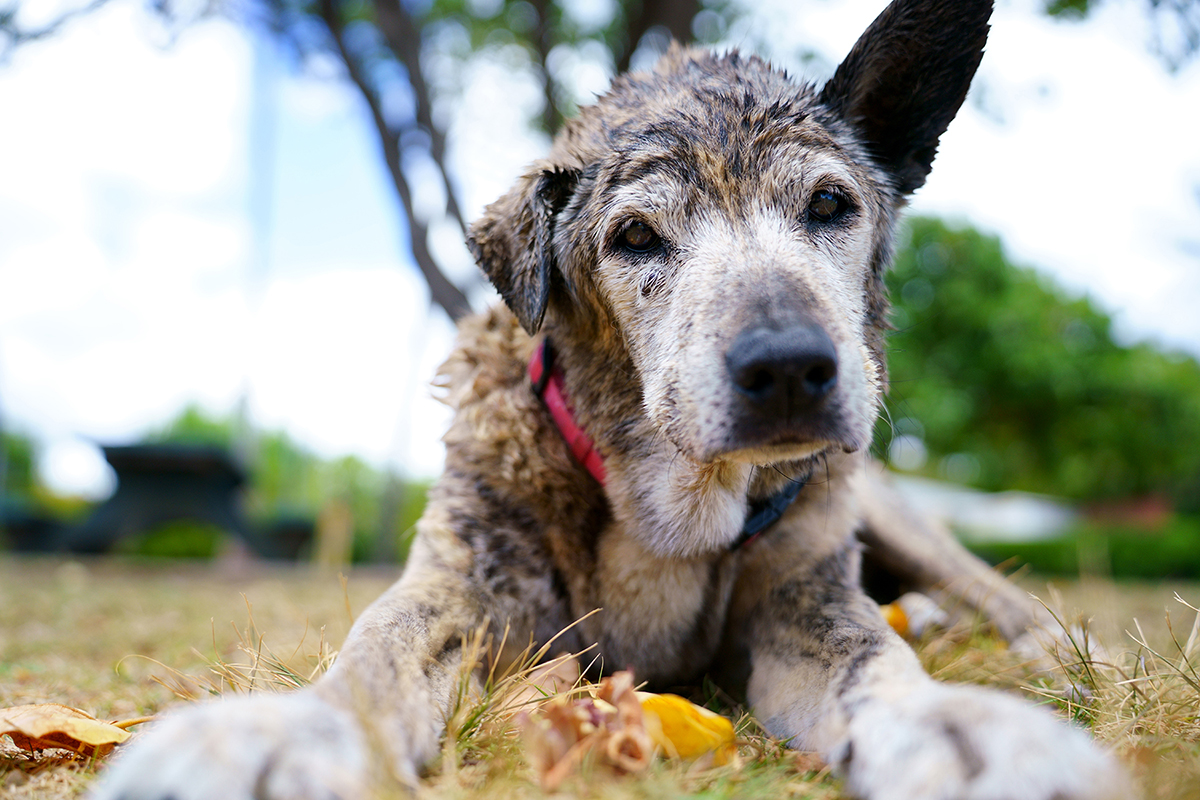
When practicing how to photograph dogs and cats, getting your pet’s attention at just the right moment can make a huge difference in the quality of your portraits. Pets are naturally curious and easily distracted, so using treats or toys is a simple and effective way to direct their gaze. To encourage your cat or dog to look into the camera, hold a favorite treat or toy close to your camera lens. This positioning naturally draws their eyes toward the lens, helping you capture lively, alert expressions that feel full of personality.
Timing is key—be ready to take the shot as soon as your pet locks eyes on the treat or toy. Using bursts or continuous shooting mode can also help you capture the perfect moment, especially if your pet tends to move quickly.
How to Photograph Cats and Dogs Quick Tip:
To capture natural, lively expressions, hold a treat or toy right near your camera lens. This simple trick keeps your pet engaged and makes it easier to grab those priceless, expressive shots.
TIP 8: Select the Right Camera Lens
Choosing the right lens makes a big difference when learning how to photograph dogs and cats. Here’s a closer look at four top lenses that can help you capture stunning pet portraits with ease.
TAMRON 28-75mm F/2.8 Di III VXD G2 for Sony E and Nikon Z mirrorless cameras
This fast standard zoom lens offers the perfect focal range for capturing portraits of cats and dogs. It delivers outstanding resolution and impressive performance, all in a lightweight, compact design. Thanks to its constant F2.8 aperture, you’ll achieve soft, beautiful bokeh that makes your subject stand out with a professional look. Plus, Tamron’s VXD autofocus motor ensures fast, precise focusing and excellent tracking, ideal for active pets. For creative close-ups, it offers a 7.1″ minimum focusing distance at 28mm and a maximum magnification ratio of 1:2.7. The 28-75mm F2.8 G2 also features TAMRON Lens Utility™, allowing easy customization and firmware updates via a computer or smartphone. Additionally, weather sealing, a fluorine-coated front element for easier cleaning, and Ø67mm filter compatibility round out its professional-grade design.
TAMRON 17-70mm F/2.8 Di III-A VC RXD for Sony E and Fujifilm X APS-C mirrorless cameras
This is the first zoom in its class to offer a 4x zoom range with a fast F2.8 constant aperture, delivering a full-frame equivalent range of 26–69mm. Thanks to the bright aperture, you can easily isolate your subject and create beautiful background blur, or bokeh, for a professional finish. Additionally, the RXD autofocus motor operates extremely quietly, making it perfect for both still photography and video work. With VC (Vibration Compensation) image stabilization, the lens supports easy handheld shooting when chasing your active pet. Moreover, if you’re creating video content, the compact design fits easily on a gimbal, and when handheld, AI-assisted VC ensures superb stabilization performance. Finally, the lens features weather sealing, a fluorine-coated front element for easy cleaning, and compatibility with Ø67mm filters.
TAMRON 20-40mm F/2.8 Di III VXD for Sony E-mount mirrorless cameras
This unparalleled fast-aperture standard zoom delivers a constant F2.8 aperture across the entire zoom range, all in a class-leading compact design at just 3.4″ and 12.9 oz. Offering a standard 40mm focal length, it’s perfect for everyday shooting and pet photography, while the ultra-wide 20mm end is ideal for stills and video content of your cats and dogs. Additionally, it provides exceptional close-up performance with a 6.7″ minimum focusing distance and a 1:3.8 max magnification at 20mm. Fast, precise autofocus is powered by Tamron’s acclaimed VXD motor, making it easy to track pets in motion. The lens is also compatible with TAMRON Lens Utility™ for customizing Focus Ring settings and firmware updates. Finally, weather sealing, a fluorine-coated front element, and Ø67mm filter compatibility ensure durability and easy maintenance.
TAMRON 35-150mm F/2-2.8 Di III VXD for Sony E and Nikon Z mirrorless cameras
This unique fast-aperture zoom lens covers wide-angle to telephoto ranges in one compact design, making it ideal for pet portrait photography. It’s also the first zoom lens for Sony E-mount and Nikon Z mount full-frame mirrorless cameras to feature a maximum wide-open aperture of F2. With all the popular portrait focal lengths built in, you can easily compose the perfect shot without changing lenses or repositioning yourself. Plus, the VXD (Voice-coil eXtreme-torque Drive) linear motor delivers exceptionally fast, precise autofocus for sharp, reliable results. Additionally, the lens supports TAMRON Lens Utility™ software for easy Focus Ring customization and firmware updates. Finally, weather sealing, a fluorine-coated front element for easier cleaning, and Ø82mm filter compatibility complete its robust, pro-ready build.
Learn More About How to Photograph Cats and Dogs
We hope your questions on how to do dog photography and how to do cat photography have been answered in this “how to photograph dogs and cats guide.” Patience, creativity, and a bit of playfulness will go a long way in capturing beautiful and memorable pet portraits. To learn more, download TAMRON Magazine Issue 3 with our cover story “The Expressive Life of Pets with Alex Cearns” where professional pet photographer Alex Cearns shares her secrets for creating unforgettable pet portraits.
Learn about these lenses and more at an authorized Tamron dealer in your area or visit the TAMRON Store today.

